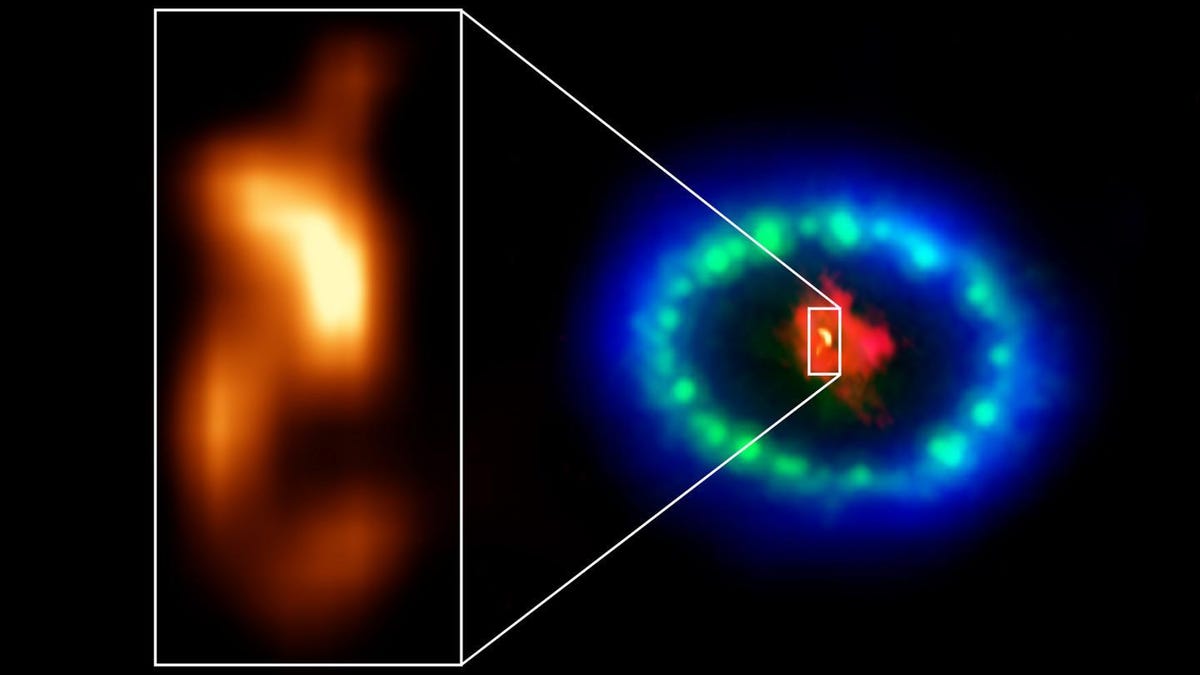A neutron star might be hiding as a 'blob' inside massive stellar explosion
It would be the youngest neutron star known to date.

Extremely high-resolution ALMA images revealed a hot "blob" in the dusty core of Supernova 1987A.
We've all played a spot of hide and seek when we were young, but not all youngsters can claim a supernova as our hiding place. Especially not one that has been the subject of speculation for over 33 years.
In 1987, scientists witnessed one of the brightest ever explosions in the night sky and since then have been scouring the area for evidence of any compact objects formed from the blast's remnants. The explosion, a supernova known as SN 1987A, showered neutrinos on Earth the day of its explosion, which led astronomers to ponder the possibility of a neutron star forming within the collapsed center of the star.
Recently, a team from the ALMA radio telescope seem to have narrowed in on where the star might be hidden. High-resolution images from the telescope, showing a "blob" in the core of SN 1987A, match the suspected location of the neutron star and provide the first real evidence that it may have formed within the explosive outburst.
Mikako Matsuura, a member of the team that found the blob, said, "We were very surprised to see this warm blob made by a thick cloud of dust in the supernova remnant ... There has to be something in the cloud that has heated up the dust and which makes it shine. That's why we suggested that there is a neutron star hiding inside the dust cloud."
Published today in The Astrophysicist Journal, an additional report confirmed that a young neutron star may shine as brightly as the blob the ALMA team had discovered. The theoretical study's lead author, Dany Page, confirmed that, "in spite of the supreme complexity of a supernova explosion and the extreme conditions reigning in the interior of a neutron star, the detection of a warm blob of dust is a confirmation of several predictions."
We still need clearer images of the blob to confirm it is indeed a neutron star, but those analyses may take a while. The supernova cloud is still far too thick to peer through, so until it fades into transparency, we're stuck playing hide and seek.

